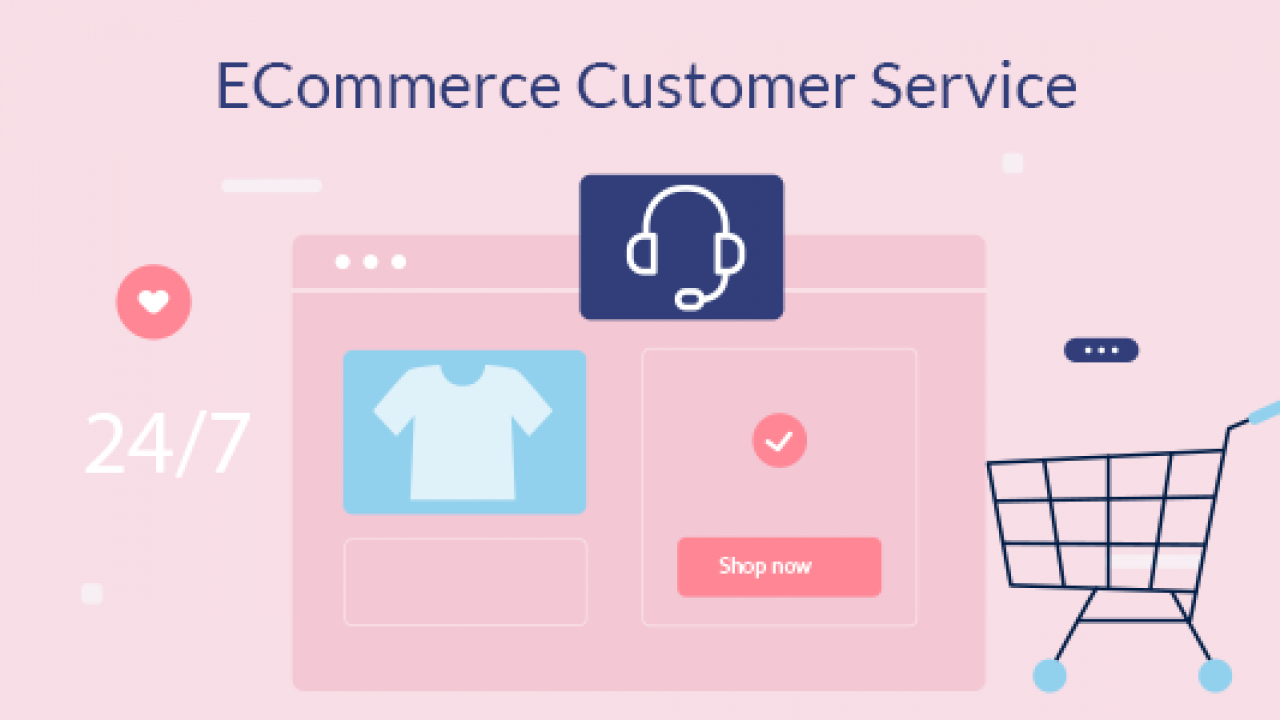Hello!
 The pandemic has accelerated the shift to e-commerce, which continues to grow worldwide. Ecommerce sales will surpass $1 Trillion in 2018 and reach $5.9 trillion by 2026.
The pandemic has accelerated the shift to e-commerce, which continues to grow worldwide. Ecommerce sales will surpass $1 Trillion in 2018 and reach $5.9 trillion by 2026.
Consumers have many online shopping choices today, which makes the customer experience an important competitive advantage for e-commerce businesses.
 Positive customer experiences build trust and relationships, increase brand loyalty, and help to reduce customer churn. Genesys research shows that 70% of consumers believe a company’s customer service is the best.
Positive customer experiences build trust and relationships, increase brand loyalty, and help to reduce customer churn. Genesys research shows that 70% of consumers believe a company’s customer service is the best.
Customers will leave e-commerce businesses that do not provide excellent customer service.
PwC’s survey found that one-third of Americans ( 32% ) will leave a brand they like after one bad experience.
Ecommerce companies must be customer-centric to thrive in a marketplace crowded with etailers all competing for market share. They must also focus on customer experience and create loyal customers.
Companies that e-commerce want to improve the customer experience must eliminate any potential friction points by:
1. Invest in Top-Notch Customer Service Staff
 To deliver exceptional customer experiences, it is important to invest in training and staffing a dedicated customer service team. PwC’s report on human interaction found that 82% of consumers in the United States want more of it.
To deliver exceptional customer experiences, it is important to invest in training and staffing a dedicated customer service team. PwC’s report on human interaction found that 82% of consumers in the United States want more of it.
These experienced teams are crucial in shaping customer experiences. 79% of consumers believe that the experience a company offers is just as important as its products or services.
Today’s consumers expect excellent e-commerce shopping experiences. This expectation is key to building a customer service team that exceeds customer expectations. This touchpoint can be optimized to allow customers to reach brand experts quickly and efficiently to resolve their problems. It also demonstrates a commitment to providing a high-quality customer experience.
Customer experience staff members should be responsive to customers and maintain positive relationships with them. This will improve the customer experience and increase sales.
2. Leveraging Customer Service Technology
 E-commerce companies can effectively deploy self-service features to reduce friction in customer experience. This will increase customer satisfaction.
E-commerce companies can effectively deploy self-service features to reduce friction in customer experience. This will increase customer satisfaction.
Customers can benefit from customer service technology that is quick and convenient. This improves responsiveness and supports the customer experience teams. It also frees them up to help customers with more complicated problems.
Customer service can be automated through a live chat channel to provide 24/7 customer service. Additionally, integrating a customer experience platform for FAQs greatly reduces the time taken by customers to resolve issues. These tools enable customers to resolve their questions quickly and easily by clicking a button or chatting with them.
Browse, my company saw firsthand the benefits of this technology. Recent improvements to the self-service customer experience automation platform have helped increase customer satisfaction by 30% between 2020 and 2021.
3. Shipping Free of Charge
 E-tailers have the ability to make shopping easier by offering free shipping if minimum order is made.
E-tailers have the ability to make shopping easier by offering free shipping if minimum order is made.
This practice is considered more customer-friendly by consumers. The majority of U.S. customers expect free shipping when they place a minimum order between $25 and $50. If this is not possible, they will abandon their shopping carts and move to a competitor who does.
Online shopping is not without its problems. RetailWeek’s The CX Factor: 1000 Consumers on What Turns them On (and Off) Your Brand found that expensive delivery is the number one problem for online shoppers. 78% cited this as their three biggest pet peeves about shopping online.
4. Refunds and Returns that are Hassle-Free
Customer experience is shaped by the return and refund policies. Customers will often check the return policies of e-tailers before they make a purchase. Companies that offer hassle-free, worry-free refunds and returns are likely to be a good choice. Smooth, seamless returns and refunds are key to keeping customers happy and turning them into returning customers.
 A UPS study that examined evolving preferences, expectations, and trends in online shopping found that 73% of those surveyed said that their returns experience had an impact on whether or not they would shop with the retailer again.
A UPS study that examined evolving preferences, expectations, and trends in online shopping found that 73% of those surveyed said that their returns experience had an impact on whether or not they would shop with the retailer again.
According to the same study, delays in receiving a refund are the most common reason for poor returns experiences. Klarna also found that 84% of online shoppers would abandon a retailer if they had a poor experience with returns.
It is clear that customer loyalty and satisfaction can be increased by offering a hassle-free return policy. Browse’s Customer Satisfaction Score increased from 50.5% in 2019 to 80.9% in 2020, after the company implemented a hassle-free refund policy.
5. Mobile Optimization
 More than 290,000,000 smartphone owners in the U.S.A. are using their smartphones to shop, with many of them shopping via mobile devices. Oberlo estimates that nearly three-quarters of all online purchases are made via a mobile device.
More than 290,000,000 smartphone owners in the U.S.A. are using their smartphones to shop, with many of them shopping via mobile devices. Oberlo estimates that nearly three-quarters of all online purchases are made via a mobile device.
These stats make it clear that e-tailers should optimize their e-commerce websites to improve the mobile shopping experience. This means that websites should be easy to navigate and pages loaded quickly on mobile devices.
Google data has shown that 53% of website visitors abandon websites that take longer than 3 seconds for a mobile site to load.
Ecommerce companies must provide a mobile-friendly experience that appeals to consumers who shop on a smaller screen.
Online shopping offers consumers many options. To capture the share of the wallet, eCommerce companies must embrace customer-centricity. This eliminates friction and points out the need for positive customer experiences.
Also read:
- Top 5 Wealth Building Strategies
- How to Plan Routes for Large Goods Vehicles?
- How To Build A Money-Making Brand – A Step-by-step Guide
Thank you!
Join us on social media!
See you!






